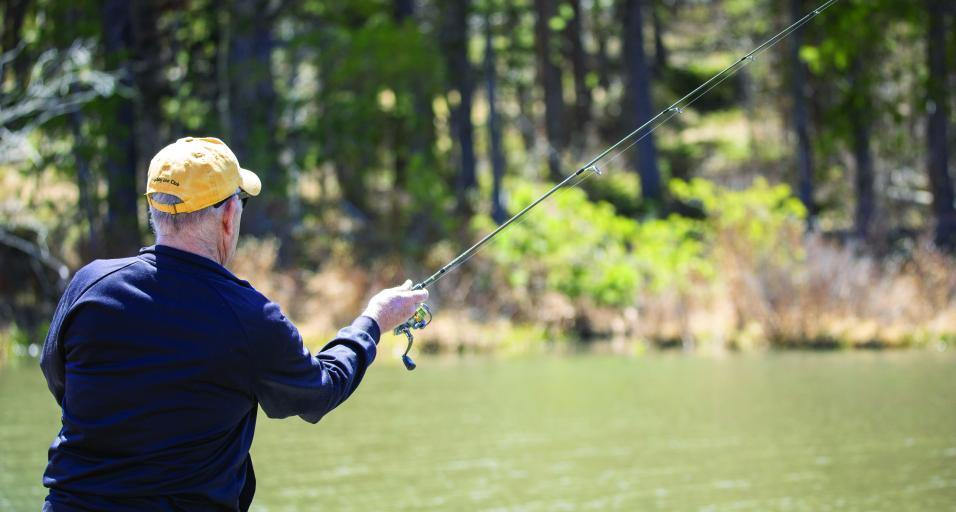Whether you pursue trout, walleye, kokanee salmon or even channel catfish, Wyoming has angling opportunities for you. The forecast for these fish — and other species — looks promising this spring and summer. Wyoming Game and Fish Department fish division personnel provided a spring-summer fishing outlook for their respective regions. From beginner anglers to the most skilled and experienced, there is something out there for everyone.

Casper Region
As always, Glendo Reservoir is one of the best places in the state for spring and summer walleye fishing.
“Our netting surveys show strong numbers of 3- and 4-year-old walleye which will range from 14 inches long to around 18 inches by summer,” said Matt Hahn, Game and Fish fisheries supervisor in the Casper Region. “The number of large walleye — fish greater than 20 inches — is expected to be consistent with years past.”
Black and white crappie and yellow perch are present in Glendo. However, those populations are down due to walleye predation and a winterkill of gizzard shad during the winter of 2023-24. Glendo also offers exceptional fishing for channel catfish with a strong population of fish longer than 30 inches.
Seminoe Reservoir rainbow trout numbers look good this year. Sampling showed good survival of 2024-stocked trout. Anglers should have great success catching fish in the 16-18-inch range. Walleye anglers at Seminoe should expect fast fishing. Many of the walleye are small, so Game and Fish is encouraging anglers to harvest limits of the smaller fish as they are showing signs of stunting.
Pathfinder Reservoir also has a lot of small walleye, and the department is encouraging harvest of fish shorter than 14 inches.
Trout fishing on the North Platte River between Seminoe Dam and Dave Johnston Power Plant Dam near Glenrock is a great option. Being downstream of major dams, these river reaches are typically unaffected by seasonal droughts or high-water temperatures and fish great all year.
Cody Region
Some of the region’s most popular trout fisheries are at their best April-June. Rivers such as the South Fork Shoshone, the lower portion of the Shoshone and Clarks Fork Yellowstone prior to runoff offer outstanding angling, said Sam Hochhalter, Game and Fish fisheries supervisor in the Cody Region.
The Bighorn River in Thermopolis is at its best in the spring and early summer before aquatic plants and algae get too thick.
Lakes such as East Newton, Luce and Hogan are go-to places once rivers swell with snowmelt. The Sunshine reservoirs west of Meeteetse offer excellent shoreline angling as the ice begins to melt.
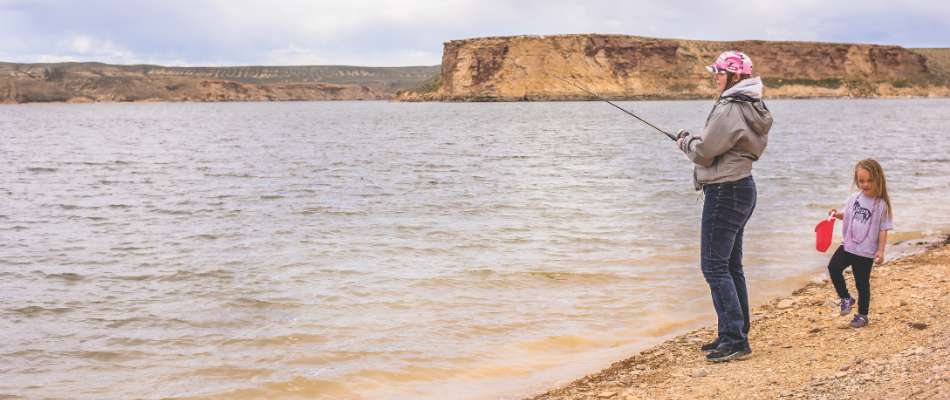
Green River Region
Anglers are encouraged to take advantage of the unlimited harvest of lake trout shorter than 28 inches at Flaming Gorge Reservoir.
“Angler harvest will be critical to recovering the kokanee salmon and stocked trout populations,” said Robb Keith, Game and Fish fisheries supervisor in the Green River Region who retired in March after 30 years with the department. “Lake trout predation impacts on these populations are still really high. Trolling and jigging small lake trout this spring and early summer should be excellent.
“Not only is there an abundance of lake trout between 17-23 inches in the reservoir, we are very concerned about the numbers of smaller lake trout less than 16 inches that we are seeing close to most of the cliffs which are adjacent to the river channel,” Keith said. “These small lake trout are great for canning, pickling and smoking.”
Keith added trophy lake trout fishing should continue to be good and similar to last year.
Keith said kokanee fishing at Flaming Gorge should be fair and similar to last year. Rainbow trout fishing improved last fall and this winter, so the expectation is positive this spring. Anglers should find several year classes of rainbows near shore in most areas, especially toward the backs of bays and on the big flats that are abundant north of the canyon section of the reservoir.
Anglers should be aware of another trout in the Gorge.
“We keep hearing about and seeing pictures of Bear River cutthroat between 5-10 pounds. Although not numerous, they are out there,” Keith said.
Trout fishing should be good to excellent at Fontenelle Reservoir this spring and into summer until water temperatures warm. Kokanee have been scarce through the ice this winter, but there should be a good number of fish between 15-17 inches with the occasional fish longer than 19 inches. Fishing for kokanee should heat up in May and will produce a nice summer fishery for boat anglers.
The Green River below Fontenelle Reservoir continues to produce exceptional rainbow, brown and cutthroat trout.
“The Green River does not have huge numbers of trout per mile, but it has plenty of memorable fish,” Keith said. “The fish can be tough to catch at times and will tax the patience of the most experienced anglers, but it's worth it when that big one grabs your fly, lure or bait.”
Viva Naughton Reservoir may be a little slow this year. No rainbow trout were stocked in 2023 due to poor water conditions at the time of stocking. Fish were stocked in 2024 and those should be close to 12-13 inches by June.
The tiger trout state record was caught from Viva Naughton each of the last two years, and prior to that it was caught from High Savery Reservoir near Baggs. Keith said the next tiger trout record is “undoubtedly swimming around” in Viva Naughton, High Savery or possibly the Kemmerer City Reservoir just downstream from Viva Naughton.
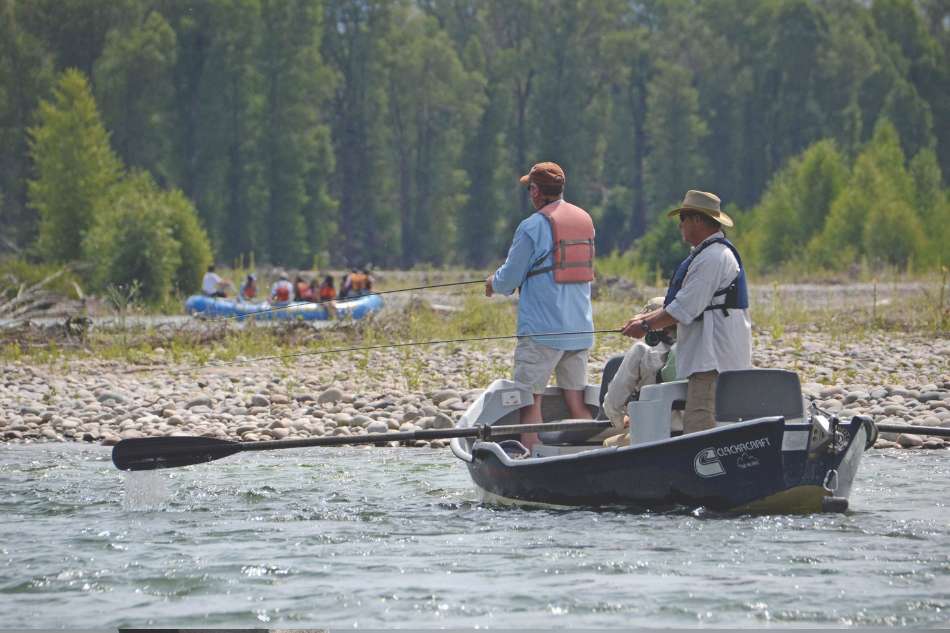
Jackson Region
Spring and early-summer fishing around Jackson is all about timing.
Once the weather starts to warm but the snow is still on the mountains, the main stem of the Snake River is a wonderful place to target mountain whitefish and Snake River cutthroat trout. These fish become more active as temperatures increase and the river is still fishable.
Once runoff takes over the river, it is time to head to the lakes.
“Right after ice-off can be a great time to catch lake trout from shore on Jackson, Jenny, Leigh and Phelps lakes as they have not yet been pushed into deeper water by warm water temperatures,” said Diana Miller, Game and Fish fisheries biologist in the Jackson Region. These fish, along with brown trout and Snake River cutthroat trout, become more active as water temperatures warm. They are drawn toward the shoreline, which warms quicker and is more productive than other areas of the lake.
Keep in mind that streams inside Grand Teton National Park, with the exception of Buffalo Fork River, Gros Ventre River, Pacific Creek, Polecat Creek and the Snake River, are closed to fishing in the spring to protect spawning cutthroat trout. If you do catch a cutthroat trout in a legal area and do not intend to harvest it, land it quickly and release it back into the water gently so it can resume spawning.
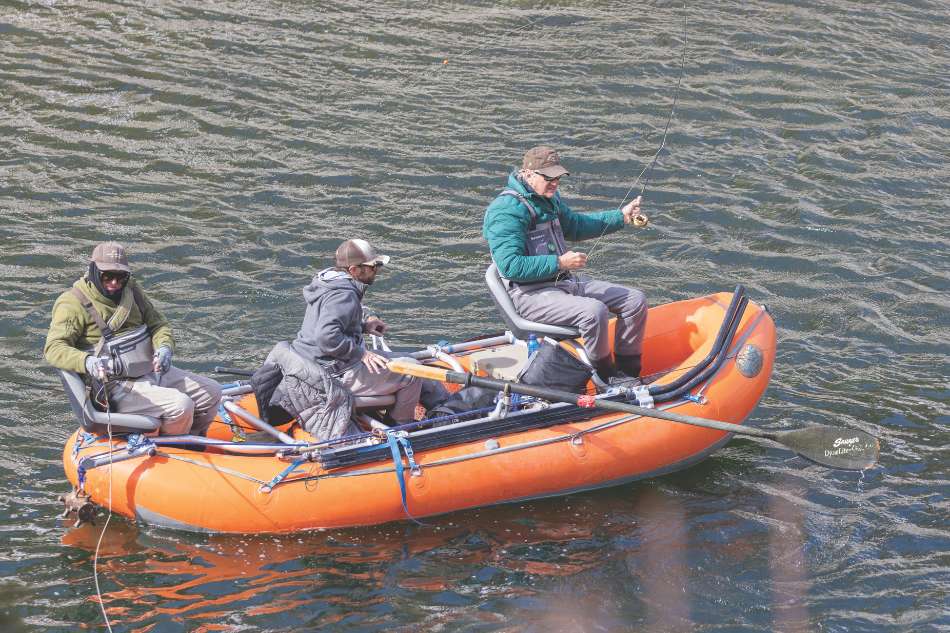
Lander Region
Walleye fishing should again be exceptional at Boysen Reservoir.
“The 2018 year-class is the biggest since the late 1990s. These fish will be about 17-19 inches this year,” said Paul Gerrity, Game and Fish fisheries biologist in the Lander Region. “The 2021 and 2022 year-classes also were well-above average. These fish should be about 13-15 inches this year. In 2023-24 we observed summer angler catch rates approaching one walleye per hour of fishing time. For comparison’s sake, monthly angler catch rates for walleye at Boysen Reservoir sometimes exceeded those at Glendo Reservoir, which is considered to have the most consistent and robust walleye population in the state.”
Spring also can be a great time to target rainbow trout at Boysen. Fish can be found along the shoreline before water temperatures rise and provide a great opportunity for anglers without the need for a boat.
Walleye numbers in Ocean Lake also are above average. Most of the walleye will be 11-13 inches. But good numbers of 15-16-inch walleye also exist. Trout numbers in the Little Popo Agie River in Red Canyon are outstanding, with some reaches of up to 600 pounds of trout per mile. Brown trout are the most abundant species, but rainbow trout and native mountain whitefish also are present. Brown trout longer than 20 inches are available to anglers in this reach.
The East Fork Wind River drainage, which includes the East Fork Wind River, Bear Creek and Wiggins Fork should be good for Yellowstone cutthroat as this species’ numbers generally increase as you travel upstream. Fishing starts to pick up as runoff recedes. All streams in the East Fork drainage allow fishing by artificial fly and lure only, and all cutthroat trout must be released immediately.
Another good spot for Yellowstone cutthroat is Fish Lake near Union Pass. The lake provides camping opportunities and is usually accessible by the end of June. Anglers might also catch tiger trout, which were stocked a few times in recent history.
Summer is prime time to target largemouth bass at Lake Cameahwait. Anglers can count on aggressive fish leading up to the mid-June spawning period, though catch rates may drop as fish begin to focus on spawning.
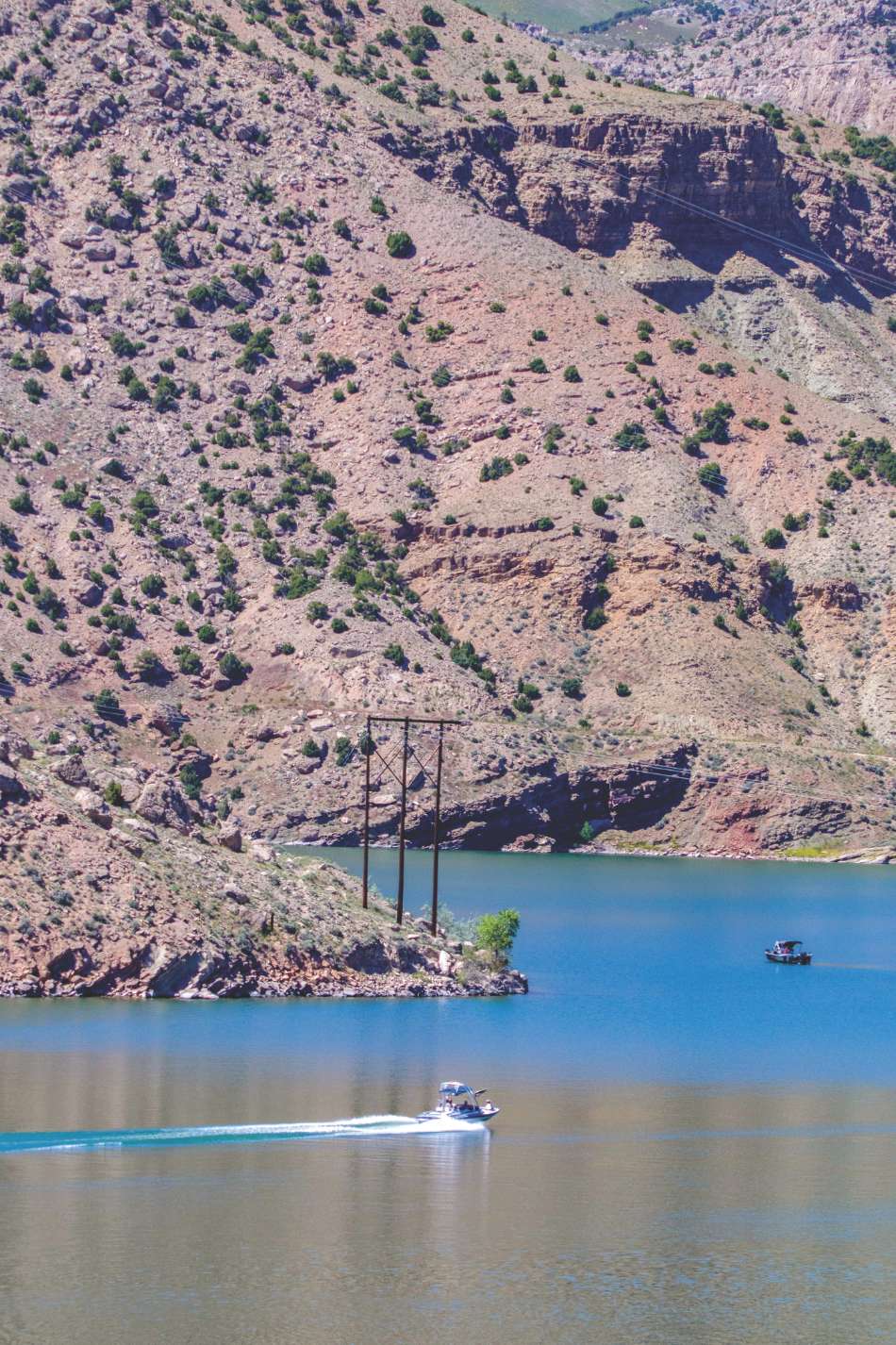
Laramie Region
Saratoga Lake has recovered nicely after the rotenone project in 2022 to remove illegally introduced yellow perch.
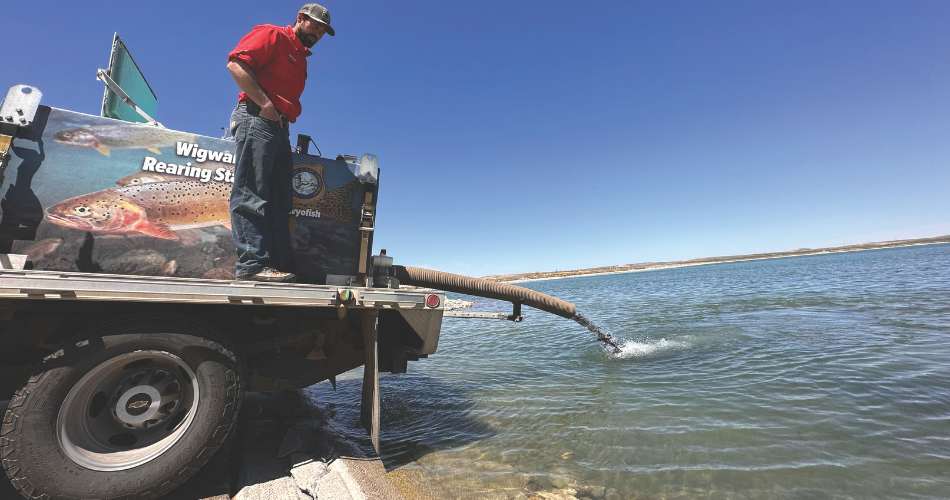
“Catch rates for rainbow trout are high, and these fish are averaging 14-22 inches,” said Bobby Compton, Game and Fish fisheries supervisor in the Laramie Region. “Fish this lake in late-spring and early-summer before water temperatures warm up.”
Fishing for rainbow trout at Twin Buttes Reservoir has been hot the last few springs, especially in the shallow portions. Additionally, anglers can help with research Game and Fish is conducting to evaluate Eagle Lake and fall rainbow trout strains.
The 1-2 weeks following spring runoff can be the best river fishing of the year. As water clears and begins to drop June 15-30, trout feed heavily on the abundant aquatic insect hatches in nearly every river in the region.
Spring is an excellent time to target walleye, crappie and smallmouth bass at Grayrocks, Hawk Springs and Wheatland No. 1 reservoirs as these fish move into shallow water to spawn and feed.
Pinedale Region
Boulder, Fremont and Half Moon lakes can be great for lake trout from the shore because road conditions often allow anglers access as ice melts. “Lake trout are often cruising the shallows during this time and offer opportunities to tie into some large fish, which often move to shelves, humps and other deep-water structures later in the summer,” said Alex LeCheminant, Game and Fish fisheries biologist in the Pinedale Region.
The Green and New Fork rivers offer some great fishing before peak runoff begins from late April through the end of May. Fish often hold in deep, slow runs at this time of year. Once runoff subsides and trout begin to look up, dry fly-fishing is expected to be excellent this summer.
Colorado River cutthroat trout in many of the region’s headwater streams and lakes offer solid fishing in some of the most breathtaking backdrops in the state. North Horse Creek in the Wyoming Range is expected to fish well this year. North Piney Lake is worth the trip, where cutthroat exceeding 14 inches continue to be abundant. Accessing this lake requires a 4.5-mile hike or ATV ride from the North Piney Trailhead. Anglers are reminded the lake is closed to fishing from June 1-July 15 each year.
Researchers at Colorado State University working cooperatively with Game and Fish discovered the presence of whirling disease in the LaBarge Creek watershed. The disease, caused by a microscopic parasite, can affect juvenile salmonids and in some cases lead to mortality. Game and Fish plans to increase the number of large, catchable-sized cutthroat trout stocked in the drainage. These larger fish are less susceptible to whirling disease and provide angling opportunities while biologists continue to mitigate potential effects of the disease on cutthroat recruitment.
“Anglers are encouraged to continue fishing in LaBarge Creek, while making sure to always clean, drain and dry their waders, boots and other fishing equipment after every trip to avoid further spread of whirling disease,” LeCheminant said.
North Piney Creek on the Bridger-Teton National Forest is expected to be good for brook trout. Other brook trout waters expected to be solid include Gypsum, Jim and Tepee creeks — located in the upper Green River drainage.
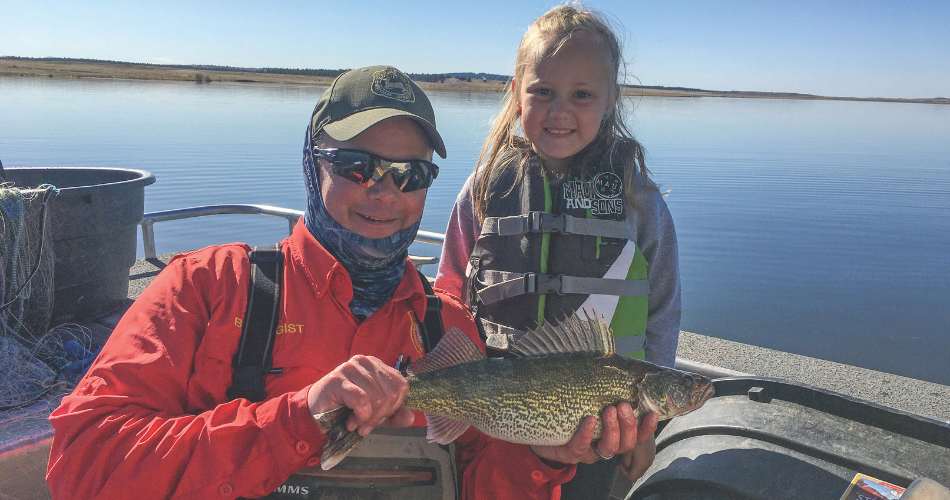
Sheridan Region
Andrew Nikirk, Game and Fish fisheries biologist in the Sheridan Region, said Keyhole Reservoir should be good for walleye and northern pike based on the last few surveys. Nikirk added crappie numbers in Keyhole have “dipped a bit in recent years.”
Healy Reservoir near Buffalo has good numbers and sizes of largemouth bass and tiger muskie, along with walleye up to 18 inches.
Rainbow trout are the most plentiful species in Lake DeSmet north of Buffalo with fish commonly between 14-18 inches.
There are brown trout in Lake DeSmet, and an expanding population of lake trout with several in the 14-20-inch range and some trophy-sized fish in deeper water. There also are trophy-sized walleye with some fish more than 10 pounds.
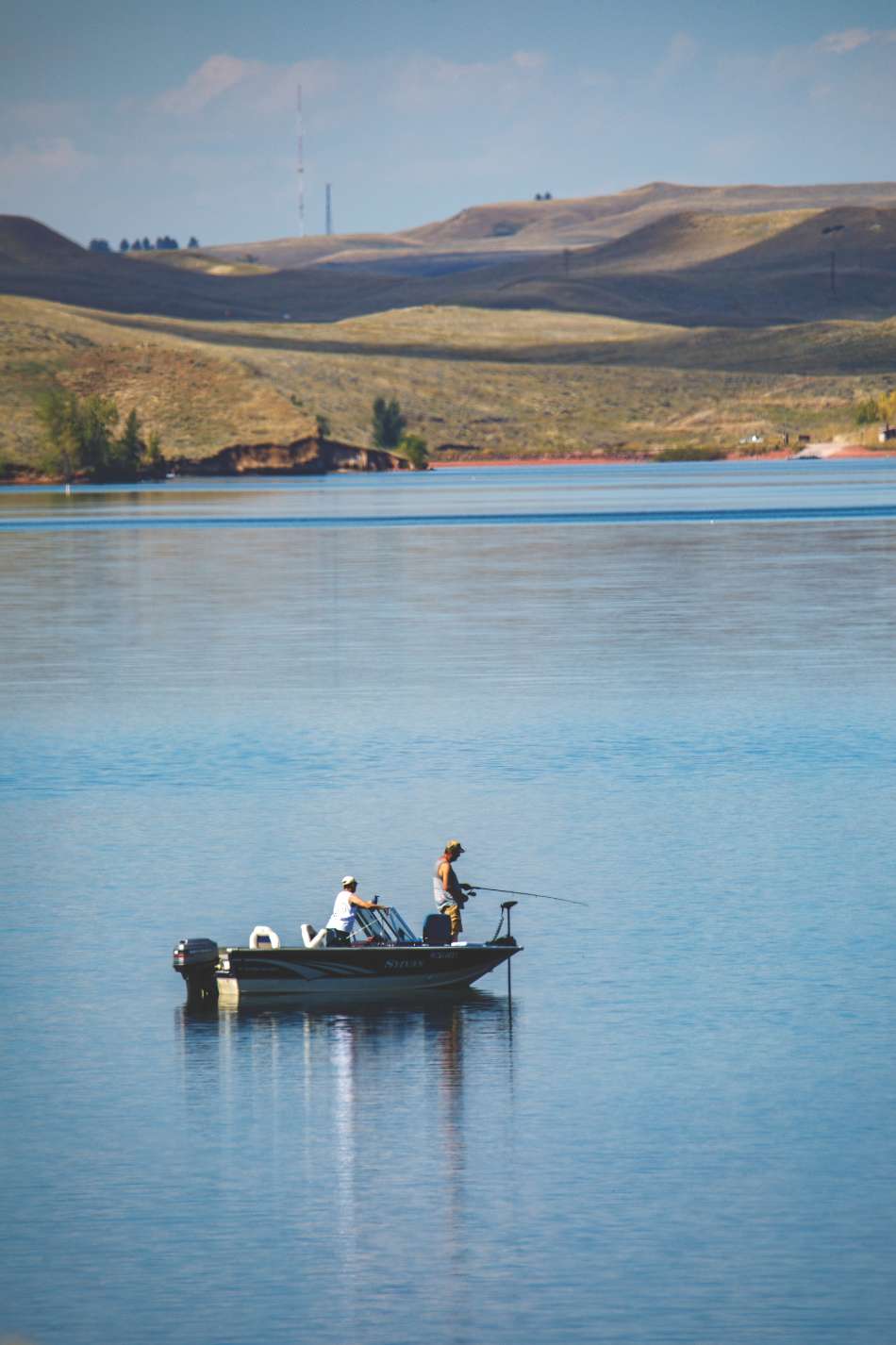
Nikirk described Sand Creek near Beulah as “awesome,” with nearly 3,000 fish per mile larger than 6 inches.
The outlook in the Bighorn Mountains looks promising.
“This area truly offers anglers tons of opportunities,” Nikirk said. “Most every river or stream offers brook, brown and rainbow trout. The North Tongue, South Tongue and Middle Fork Powder rivers are the most popular with anglers.
“In the Sheridan Region there are 64 high-alpine lakes in the Cloud Peak Wilderness with fish. Some hikes are easier than others, but the scenery is amazing.”
— Robert Gagliardi is the associate editor of Wyoming Wildlife.

